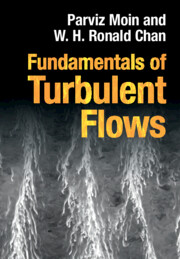A parametric study is conducted for the control of a turbulent jet using a single unsteady minijet. A number of control parameters that influence the decay rate  $K$ of the jet centreline mean velocity are investigated, including the mass flow rate ratio
$K$ of the jet centreline mean velocity are investigated, including the mass flow rate ratio  $C_{m}$ , excitation frequency ratio
$C_{m}$ , excitation frequency ratio  $f_{e}/f_{0}$ and exit diameter ratio
$f_{e}/f_{0}$ and exit diameter ratio  $d/D$ of the minijet to main jet, along with the duty cycle (
$d/D$ of the minijet to main jet, along with the duty cycle ( $\unicode[STIX]{x1D6FC}$ ) of the minijet injection. Extensive hot-wire, particle image velocimetry and flow visualization measurements were performed in the manipulated jet. Various flow structures have been identified, such as the flapping flow, non-flapping flow and that showing a manipulable thrust vector, depending on
$\unicode[STIX]{x1D6FC}$ ) of the minijet injection. Extensive hot-wire, particle image velocimetry and flow visualization measurements were performed in the manipulated jet. Various flow structures have been identified, such as the flapping flow, non-flapping flow and that showing a manipulable thrust vector, depending on  $C_{m}$ ,
$C_{m}$ ,  $f_{e}/f_{0}$ and
$f_{e}/f_{0}$ and  $\unicode[STIX]{x1D6FC}$ . Empirical scaling analysis unveils that, prior to the minijet impingement upon the wall of the nozzle and the generation of turbulence, the relationship
$\unicode[STIX]{x1D6FC}$ . Empirical scaling analysis unveils that, prior to the minijet impingement upon the wall of the nozzle and the generation of turbulence, the relationship  $K=g_{1}$ (
$K=g_{1}$ ( $C_{m}$ ,
$C_{m}$ ,  $f_{e}/f_{0}$ ,
$f_{e}/f_{0}$ ,  $d/D$ ,
$d/D$ ,  $\unicode[STIX]{x1D6FC}$ ) may be reduced to
$\unicode[STIX]{x1D6FC}$ ) may be reduced to  $K=g_{2}$ (
$K=g_{2}$ ( $\unicode[STIX]{x1D709}$ ), where
$\unicode[STIX]{x1D709}$ ), where  $g_{1}$ and
$g_{1}$ and  $g_{2}$ are different functions and the scaling factor
$g_{2}$ are different functions and the scaling factor  $\unicode[STIX]{x1D709}=(\sqrt{MR}/\unicode[STIX]{x1D6FC})(d/D)^{n}$ (
$\unicode[STIX]{x1D709}=(\sqrt{MR}/\unicode[STIX]{x1D6FC})(d/D)^{n}$ ( $\sqrt{MR}\equiv C_{m}(D/d)$ is the momentum ratio and
$\sqrt{MR}\equiv C_{m}(D/d)$ is the momentum ratio and  $n$ is a constant that depends on
$n$ is a constant that depends on  $\unicode[STIX]{x1D6FC}$ ) is physically the effective momentum ratio per pulse or effective penetration depth. Discussion is conducted based on
$\unicode[STIX]{x1D6FC}$ ) is physically the effective momentum ratio per pulse or effective penetration depth. Discussion is conducted based on  $K=g_{2}$ (
$K=g_{2}$ ( $\unicode[STIX]{x1D709}$ ), which provides important insight into the jet control physics.
$\unicode[STIX]{x1D709}$ ), which provides important insight into the jet control physics.
























